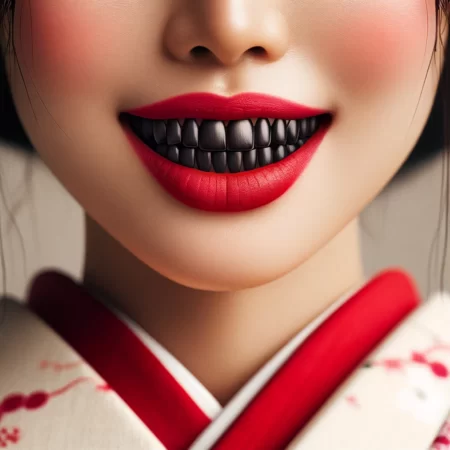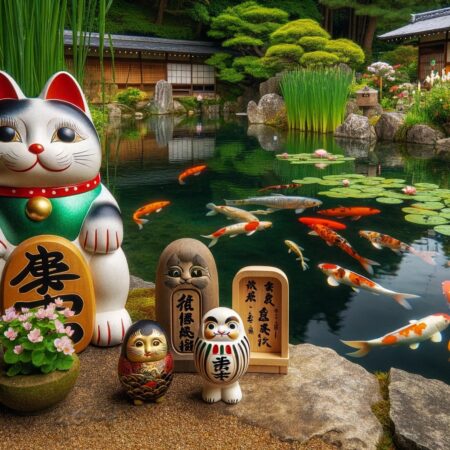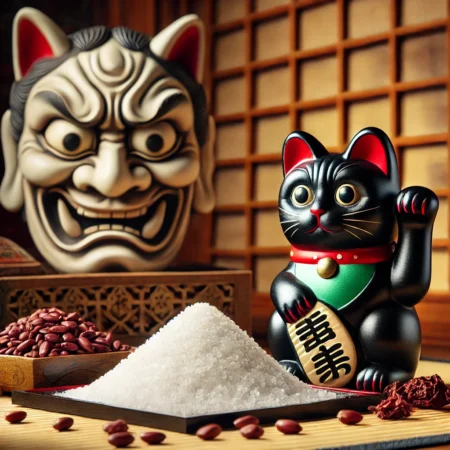Japanese burial customs have evolved diversely over time. From ancient times to the present, the historical context and societal changes of each era have deeply influenced funeral and burial practices. Starting with the crouched burials of the Jomon period, the extended burials of the Yayoi period, and the large keyhole-shaped tombs of the Kofun period. Furthermore, the spread of cremation influenced by Buddhism during the Kamakura period, and the differences in burial customs in cities during the Edo period. Tracing the evolution of Japanese burial culture reveals not just differences in burial methods, but also the thoughts, beliefs, and changes in social structure of the people involved. Let’s explore the burial methods of each era.
Burial Practices in the Jomon Period

During the Jomon period (approximately 14,000 BCE to 300 BCE), a unique burial method known as “flexed burial” was practiced. Flexed burial involves burying the body in a bent position. This method is rarely seen outside of Japan, with the exception of some regions in Africa.
Several theories explain the reasons behind flexed burials:
- Labor Savings: To reduce the effort required to dig graves.
- Comfortable Position: To ensure the deceased could rest peacefully in the afterlife.
- Rebirth Wishes: To mimic the fetal position, symbolizing hopes for rebirth or resurrection.
- Spirit Suppression: To prevent the spirit of the deceased from wandering by making it difficult for them to move.
Many of the flexed burials included bodies holding or bound by stones, which supports the theory that this practice aimed to prevent the spirits of the dead from wandering.
Burial Practices in the Yayoi Period

In the Yayoi period (300 BCE to 300 CE), burial practices underwent a significant change with the widespread adoption of “extended burials,” where the body was buried in a stretched-out position. While extended burials were practiced among the elite during the Jomon period, they became common among the general populace in the Yayoi period.
Several reasons are thought to explain the transition to extended burials:
- Time Savings: There was no longer the luxury to bend the body for burial.
- Change in Rebirth Beliefs: There was a growing understanding that the dead would not come back to life.
- Agricultural and Settlement Development: With the introduction of rice cultivation, agriculture advanced, and people’s lives became more settled.
From this period, graves also began to appear, and the influence of continental cultures led to the firm establishment of inhumation.
The evolution of funeral customs from the Jomon to the Yayoi period reflects the social changes and external influences that Japan experienced, developing in unique ways. These burial methods mirror the views on life and death, as well as the lifestyle of the people at the time, and hold significant historical value.
Burial Practices in the Kofun Period

During the Kofun period (around the 3rd to 7th centuries), burial methods for the ruling class dramatically changed, with the widespread construction of large tombs known as “kofun” throughout Japan. Let’s take a closer look at the distinctive burial practices of this era.
The Emergence of Kofun and Keyhole-Shaped Tombs
In the early Kofun period, large keyhole-shaped tombs, known as zenpo-koenfun, were particularly prevalent. These tombs were built to bury a single chieftain and symbolized the power and wealth of the local community. The keyhole-shaped tombs, consisting of a front square section and a rear circular section, demonstrated the authority of the interred individual.
Notable Examples of Kofun
- Daisenryo Kofun (Nintoku-tenno-ryo): Located in Sakai City, Osaka Prefecture, it is the largest keyhole-shaped tomb in Japan. Its immense size and grandeur reflect the influence of the highest-ranking individuals of the Kofun period.
- Ojin-tenno-ryo: Situated in Habikino City, Osaka Prefecture, it is the second-largest kofun after Daisenryo Kofun.
- Hashihaka Kofun: Located in Sakurai City, Nara Prefecture, it is a representative early kofun and is believed by some to be the tomb of Himiko, the queen of Yamatai-koku.
Burial Methods and Grave Goods

In the burial practices of the ruling class during the Kofun period, the body was placed in a stone chamber known as a sekishitsu. The stone chamber contained a coffin, and grave goods such as bronze mirrors, jasper jewelry, swords, and spears were buried alongside the deceased. These grave goods symbolized the power, status, and wealth of the buried individual in the afterlife.
Burial of the Common People
In contrast, the burial practices for common people did not undergo significant changes. Commoners continued to be buried in simple graves, highlighting the stark differences in burial methods between the ruling class and the general populace.
Significance of the Kofun Period
The Kofun period marked a significant turning point in Japanese burial culture. The construction of massive tombs for the ruling class demonstrated the societal structure and concentration of power at the time. Additionally, the grave goods accompanying the kofun provide insights into the technological and cultural advancements of the period.
While there were notable differences in the funerary practices between the ruling class and common people during the Kofun period, the era as a whole offers crucial clues to understanding the formation and development of ancient Japanese society.
Burial Practices in the Asuka Period

The Asuka period (592–710) saw significant changes in funeral culture, marking a transitional phase from the Kofun period. Let’s explore the burial customs and regulations of this era in detail.
Continuation and Transformation of Kofun
In the early Asuka period, kofun (tumulus) construction continued. For example, it is recorded that Prince Shōtoku constructed his own kofun in 618. However, the issuance of the “Sōsōrei” (Edict of Simple Burial) in 646 strictly regulated the size, construction time, and number of workers involved in building kofun. This law’s implementation led to a decline in the construction of massive kofun like those seen in the early Kofun period.
Funeral Regulations and Social Hierarchy
The Taihō Code, enacted in 701, permitted the construction of kofun only for those ranked third or higher. Thus, kofun construction became a privilege of the ruling class. Additionally, regulations were established for the funerals of commoners, requiring them to use designated burial sites. This policy prevented scattered burials and ensured centralized control over burials.
Introduction of Cremation

The Asuka period also marked the introduction of cremation in Japan. In 700, the monk Dōshō was cremated, and in 702, Empress Jitō was also cremated. However, cremation was not yet widespread and was primarily practiced among the elite. While cremation gradually became more common, the main funeral method during this period remained inhumation.
Significance of Asuka Period Burial Culture
The burial culture of the Asuka period represents a significant shift from the Kofun period. With the enactment of the Sōsōrei and the Taihō Code, funeral and burial regulations were strengthened, creating a clear distinction between the ruling class and commoners. Additionally, the introduction of cremation set the stage for future changes in funeral practices.
Thus, the Asuka period’s funeral culture, influenced by social changes and legal regulations, gradually incorporated new forms. This makes the Asuka period indispensable for understanding the diversity and evolution of ancient Japanese burial practices.
Burial Practices from the Nara to Heian Periods

Let’s explore the funeral culture from the Nara period to the Heian period (710–1185) in detail.
Funeral Regulations in the Nara Period
During the Nara period, the construction of graves within the capital was prohibited. As a result, no graves from that time have been discovered within the grounds of Heijō-kyō. This regulation was carried over into the Heian period, with the graves of emperors and nobles being constructed outside the capital.
Burial Sites for Commoners
For commoners, designated burial sites were established, similar to the Asuka period. Records such as “Guan Manki” indicate that the surrounding mountains and riverbanks of the capital were used as burial sites for commoners.
Bone Depositing Customs in the Heian Period

During the Heian period, the custom of “Kōya Nōkotsu” became widespread. This practice involved placing cremated bones or hair at Mount Koya, reflecting Buddhist beliefs in the Pure Land. For instance, Prince Shōshin’s bones were deposited at Mount Koya in 1085, and Emperor Horikawa’s hair was deposited there in 1108.
This period was considered the “Age of Degenerate Dharma” in Buddhist teachings, a time when it was believed that no one could achieve enlightenment. Therefore, emperors and nobles wished to have their remains placed at Mount Koya, believed to be the Pure Land of Maitreya Bodhisattva.
Significance of Burial Culture from the Nara to Heian Periods
The burial culture from the Nara to Heian periods developed under social regulations and Buddhist influences. The prohibition of grave construction within the capital was part of urban planning, and there was a clear distinction in burial methods between commoners and the elite. Additionally, depositing remains at Mount Koya became widespread among the elite, reflecting the deepening of Buddhist beliefs.
Thus, the burial culture from the Nara to Heian periods evolved uniquely, reflecting the social structure and religious beliefs of the time.
Burial Practices from the Kamakura to Muromachi Periods

Let’s delve into the funeral culture from the Kamakura period to the Muromachi period (1185–1573).
Funeral Practices and the Spread of Pure Land Buddhism in the Kamakura Period
With the advent of the Kamakura period, Pure Land Buddhism, including sects like Jōdo-shū and Jōdo Shinshū, became widely popular, and cremation started to be commonly practiced. Pure Land Buddhism is a faith that prays for rebirth in the Pure Land after death. Against the backdrop of ongoing social unrest and uncertainty from the Heian period, more people began to rely on Amitabha Buddha and chant the nembutsu, hoping to be reborn in the Pure Land after death.
However, despite the spread of cremation, the cremation techniques of the time were still underdeveloped, and there were not many cremation sites. As a result, it was difficult to completely incinerate bodies, leading to the continued practice of “dual burial,” which combined both cremation and inhumation. The spread of Kamakura Buddhism made Buddhist views on life and death more widely known, and elaborate funerals became common practice.
Funeral Practices and the Beginning of Temple Cemeteries in the Muromachi Period
Entering the Muromachi period, especially after the Ōnin War, many temples began to establish cemeteries within their precincts. While burial within Kyoto’s temple grounds was still prohibited, certain temples, such as Amidaji and Chionji, were granted permission for in-ground burials. This practice responded to the residents’ wish to have graves close to the main temple halls for proper memorial services, marking the beginning of today’s temple cemeteries.
Significance of Funeral Culture from the Kamakura to Muromachi Periods
The funeral culture from the Kamakura to Muromachi periods was heavily influenced by Buddhism, with the spread of cremation and the generalization of Buddhist funerals. Social upheaval and people’s anxieties promoted the spread of Pure Land Buddhism, significantly impacting funeral and burial methods. Additionally, the establishment of temple cemeteries laid the foundation for modern cemetery culture.
Thus, the funeral culture from the Kamakura to Muromachi periods developed closely tied to religious beliefs and social changes.
Burial Practices in the Edo Period
Let’s delve into the funeral culture of the Edo period (1603–1868). During this time, particularly in large urban areas, the sale and rental of Buddhist funeral items by specialized vendors became common, emphasizing not just the handling of the body but also the farewell to the deceased.
Regional Differences in Cremation and Inhumation
Funeral methods primarily consisted of cremation and inhumation, varying significantly by city.
Cremation in Osaka

Osaka was a region where cremation was prevalent. It had seven cremation-specific burial sites, such as the Dotonbori Cemetery. Here, cremation craftsmen known as “Zanmai Hijiri” were active. Between 1735 and 1861, as many as 10,000 cremations occurred in some years, with a minimum of 5,000 even in less active years. During this period, only about 10% of burials around Dotonbori were inhumations.
Inhumation in Edo

Conversely, in Edo, the smoke and stench from cremation were problematic, leading to a preference for inhumation. The inhumation of commoners was often dire, with coffins piled up in poor districts’ cemeteries, left to decay. These cemeteries typically buried day laborers and poor townsfolk with no family.
Burial Practices in Rural Areas
In rural villages, ample land meant that burial conditions were not as dire as in urban areas. Graves with headstones, similar to modern “mairi-baka” (visited graves), were common. This backdrop gave rise to the danka system, where commoners, led by temples, began the practice of visiting ancestors’ graves.
Diversification of Funeral Practices and Changing Values
Records from the Tanaka family, village headmen of Ikeji Village in Kawachi Province, indicate that funeral methods were chosen based on family wishes. Contrary to the general perception that Jōdo Shinshū (Pure Land Buddhism) adherents preferred cremation, both cremation and inhumation were practiced across all sects.
Influence on Modern Funerals
Starting from the Edo period, there was a shift towards respecting the values of the deceased and their families over traditional customs. This trend, beginning among the economically well-off, laid the foundation for modern funeral culture.
The funeral culture of the Edo period developed towards diversity and a respect for individual values, reflecting regional differences and social contexts.
Burial Practices from the Meiji to Taisho Periods

Let’s explore the funeral culture from the Meiji period to the Taisho period (1868–1926) in detail.
Funeral Reforms in the Meiji Period
In 1870, all temple cemeteries became state-owned, and in 1872, self-conducted funerals were prohibited by law. As a result, funerals had to be conducted by Shinto priests or Buddhist monks. Additionally, in the early Meiji period, a policy promoting Shintoism and suppressing Buddhism led to the issuance of a cremation ban, temporarily halting cremation practices.
However, due to public demand for the resumption of cremation and the shortage of burial land, the cremation ban was lifted just two years later. Subsequently, the hygienic benefits of cremation were recognized, and it became mandatory. During this time, influenced by Westernization, mourning attire transitioned from white to black.
Changes in Funeral Practices in the Taisho Period
Entering the Taisho period, hearses began to become popular among the common people. The traditional use of palanquins carried by human labor for funeral processions gradually disappeared. Thus, the prototype of modern funerals was formed during the Taisho period.
Significance of Funeral Culture from the Meiji to Taisho Periods
The funeral culture during this period underwent significant transformations. The nationalization policies of the Meiji period, the cremation ban and its subsequent lifting, and the mandatory cremation policy greatly influenced funeral methods and burial practices. Additionally, Westernization policies led to changes in mourning attire, such as the shift in the color of mourning clothes.
In the Taisho period, the spread of hearses revolutionized funeral processions, laying the foundation for contemporary funeral culture. These changes reflect the social and cultural shifts from the Meiji to Taisho periods, marking an important era in the development of Japan’s funeral culture.
Summary
Japanese burial methods have undergone various transformations over different eras. These burial practices, reflecting the historical and cultural contexts of their times, are not merely ways to dispose of the deceased but also show respect for the dead, religious beliefs, and societal changes. By tracing the burial culture from the Jomon period to the present day, we can gain a deeper understanding of the Japanese view of life and death and the evolution of society. For those of us living today, these historical burial methods offer valuable insights into the thoughts, beliefs, and ways our ancestors faced the end of life. It is important for us to cherish this history and continue passing it down to future generations.
















コメント